Basic Machine Learning Interview Questions
Basic questions are related to terminologies, algorithms, and methodologies. Interviewers ask these questions to assess the technical knowledge of the candidate.
What is Semi-supervised Machine Learning?
Semi-supervised learning is the blend of supervised and unsupervised learning. The algorithm is trained on a mix of labeled and unlabeled data. Generally, it is utilized when we have a very small labeled dataset and a large unlabeled dataset.
In simple terms, the unsupervised algorithm is used to create clusters and by using existing labeled data to label the rest of the unlabelled data. A Semi-supervised algorithm assumes continuity assumption, cluster assumption, and manifold assumption.
It is generally used to save the cost of acquiring labeled data. For example, protein sequence classification, automatic speech recognition, and self-driving cars.
How do you choose which algorithm to use for a dataset?
Apart from the dataset, you need a business use case or application requirements. You can apply supervised and unsupervised learning to the same data.
Generally:
- Supervised learning algorithms require labeled data.
- Regression algorithms require continuous numerical targets
- Classification algorithms require categorical targets
- Unsupervised learning algorithms require unlabeled data.
- Semi-supervised learning requires the combination of labeled and unlabeled datasets.
- Reinforcement learning algorithms require environment, agent, state, and reward data.
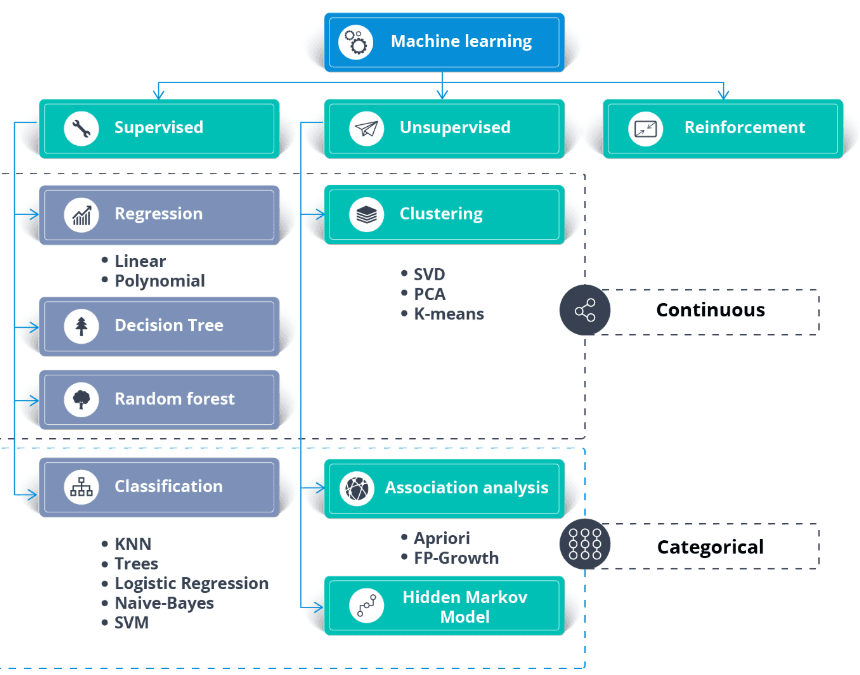
Image from thecleverprogrammer
Learn the machine learning fundamentals by taking this course.
Explain the K Nearest Neighbor Algorithm.
The K Nearest Neighbor (KNN) is a supervised learning classifier. It uses proximity to classify labels or predict the grouping of individual data points. We can use it for regression and classification. KNN algorithm is non-parametric, meaning it doesn’t make an underlying assumption of data distribution.
In the KNN classifier:
- We find K-neighbors nearest to the white point. In the example below, we chose k=5.
- To find the five nearest neighbors, we calculate the euclidean distance between the white point and the others. Then, we chose the 5 points closest to the white point.
- There are three red and two green points at K=5. Since the red has a majority, we assign a red label to it.
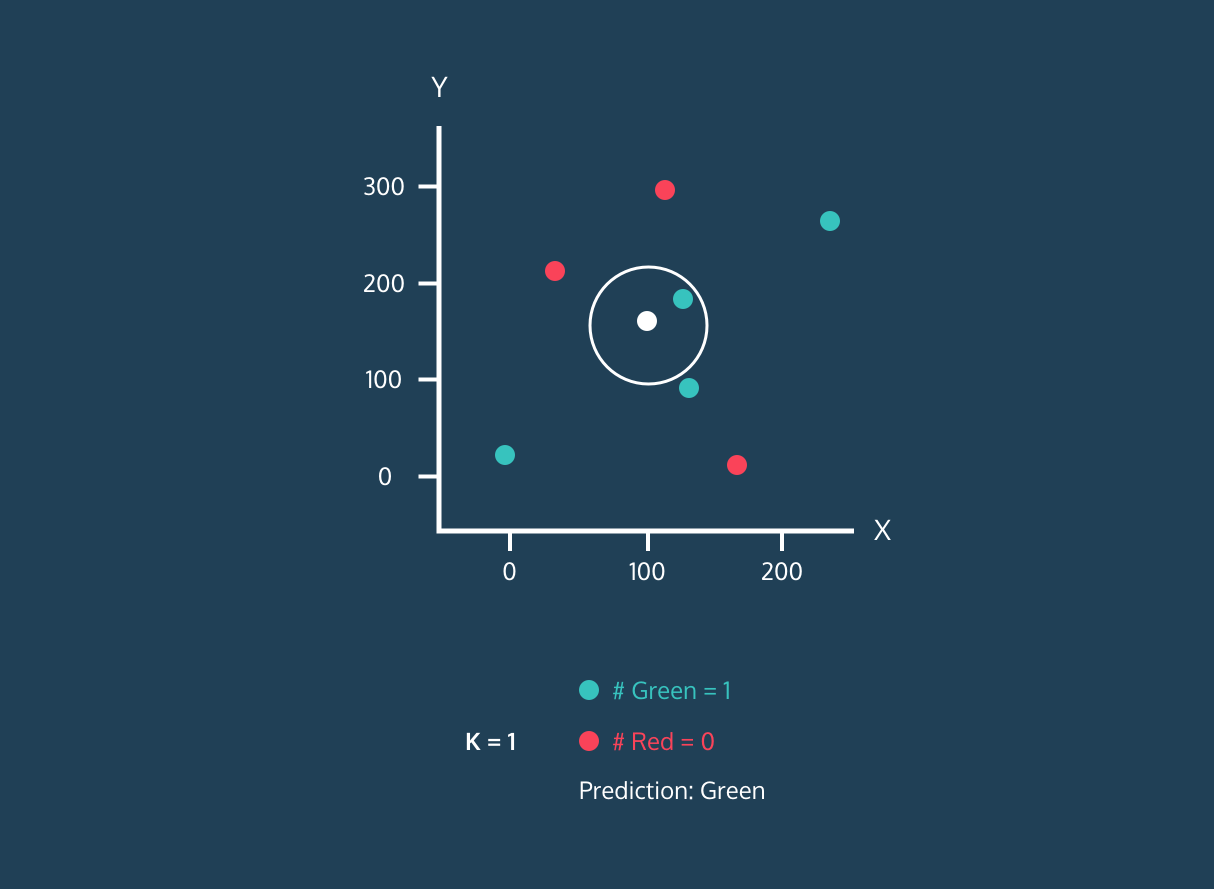
Image from Codesigner’s Dev Story
Learn all about supervised learning classification and regression models by taking a short course.
Machine Learning Technical Interview Questions
The technical interview session is more about assessing your knowledge about processes and how well you are equipped to handle uncertainty. The hiring manager will ask machine learning interview questions about data processing, model training and validation, and advanced algorithms.
Is it true that we need to scale our feature values when they vary greatly?
Yes. Most of the algorithms use Euclidean distance between data points, and if the feature value varies greatly, the results will be quite different. In most cases, outliers cause machine learning models to perform worse on the test dataset.
We also use feature scaling to reduce convergence time. It will take longer for gradient descent to reach local minima when features are not normalized.
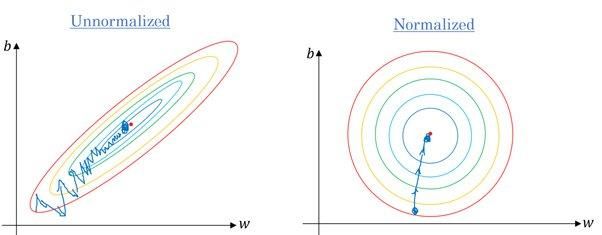
Gradient without and with scaling | Quora
Feature engineering skills are in high demand. You can learn everything about the subject by taking a DataCamp course, such as Feature Engineering for Machine Learning in Python.
The model you have trained has a low bias and high variance. How would you deal with it?
Low bias occurs when the model is predicting values close to the actual value. It is mimicking the training dataset. The model has no generalization which means if the model is tested on unseen data, it will give poor results.
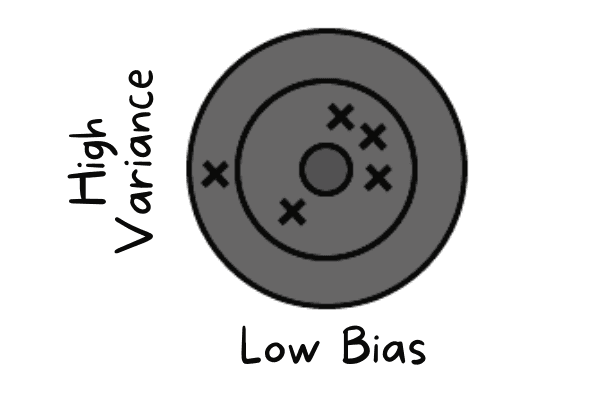
Low bias and high variance | Author
To fix these issues, we will use bagging algorithms as it divides a data set into subsets using randomized sampling. Then, we generate sets of models using these samples with a single algorithm. After that, we combine the model prediction using voting classification or averaging.
For high variance, we can use regularization techniques. It penalized higher model coefficients to lower model complexity. Furthermore, we can select the top features from the feature importance graph and train the model.
Which cross-validation technique would you suggest for a time-series dataset and why?
Cross-validation is used to evaluate model performance robustly and prevent overfitting. Generally, cross-validation techniques randomly pick samples from the data and split them into train and test data sets. The number of splits is based on the K value.
For example, if the K = 5, there will be four folds for the train and one for the test. It will repeat five times to measure the model performed on separate folds.
We cannot do it with a time series dataset because it doesn’t make sense to use the value from the future to forecast the value of the past. There is a temporal dependency between observations, and we can only split the data in one direction so that the values of the test dataset are after the training set.
The diagram shows that time series data k fold split is unidirectional. The blue points are the training set, the red point is the test set, and the white is unused data. As we can observe with every iteration, we are moving forward with the training set while the test set remains in front of the training set, not randomly selected.
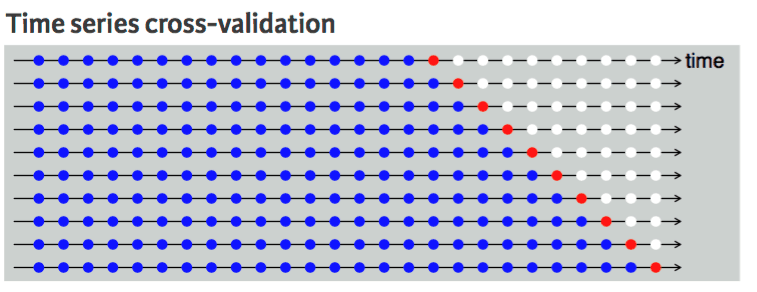
Time series cross validation | UC Business Analytics R Programming Guide
Learn about time series data manipulation, analysis, visualization, and modeling by taking Time Series with Python.
Role-Specific Machine Learning Questions
Most machine learning jobs offered on LinkedIn, Glassdoor, and Indeed are role specific. As such, during the interview, they will focus on role-specific questions. For the computer vision engineering role the hiring manager will focus on image processing questions.
Computer Vision Engineering Interview Questions
Why can the inputs in computer vision problems get huge? Explain it with an example.
Imagine an image of 250 X 250 and a fully connected hidden first layer with 1000 hidden units. For this image, the input features are 250 X 250 X 3 = 187,500, and the weight matrix at the first hidden layer will be 187,500 X 1000 dimensional matrix. These numbers are huge for storage and computation, and to combat this problem, we use convolution operations.
Learn image processing by taking a short Image Processing in Python course
When you have a small dataset, suggest a way to train a convolutional neural network.
If you do not have enough data to train a convolutional neural network, you can use transfer learning to train your model and get state-of-the-art results. You need a pre-trained model which was trained on a general but larger dataset. After that, you will fine-tune it on newer data by training the last layers of the models.
Transfer learning allows data scientists to train models on smaller data by using fewer resources, computing, and storage. You can find open-source pre-trained models for various use cases easily, and most of them have a commercial license which means you can use them to create your application.
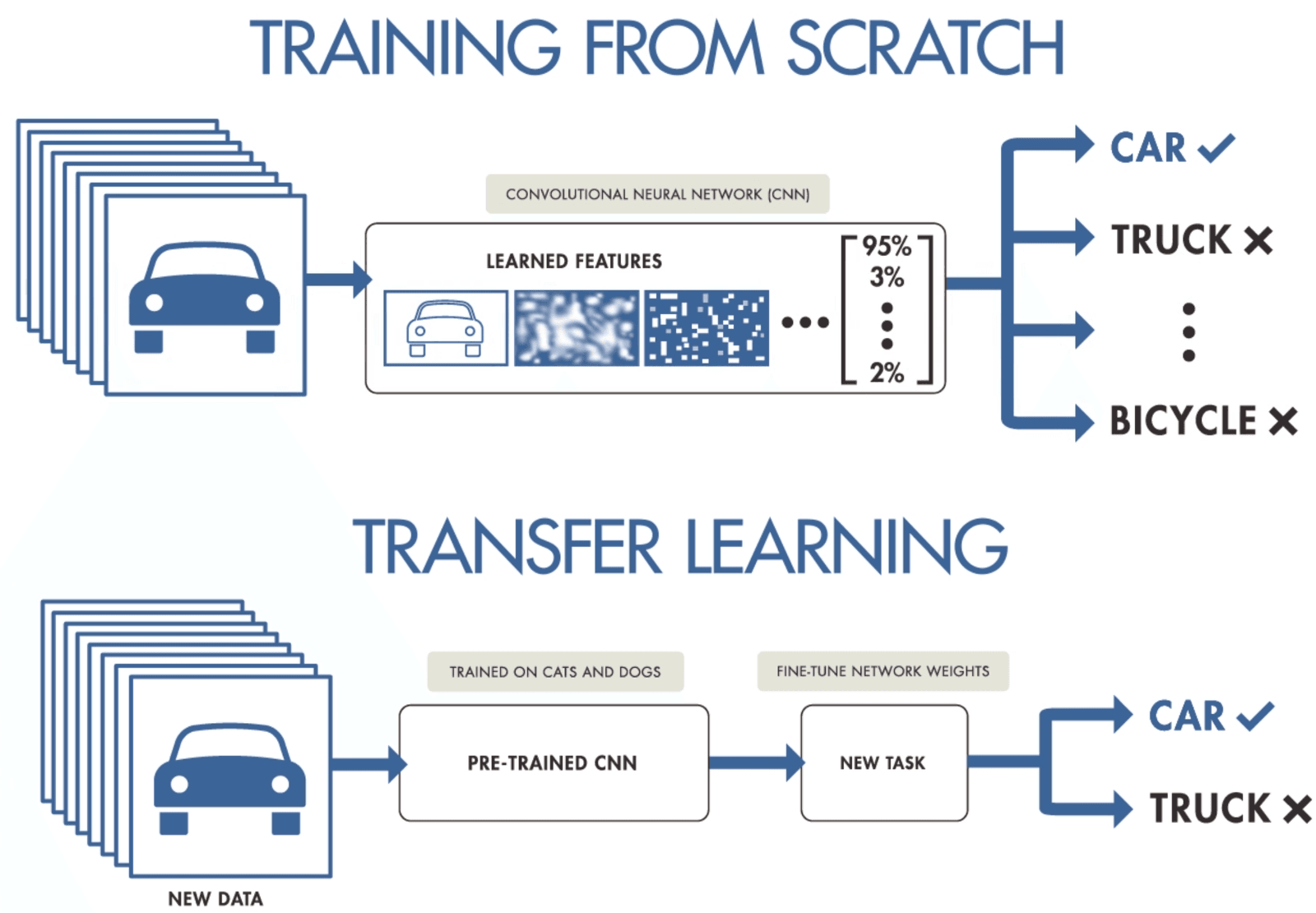
Transfer Learning by purnasai gudikandula
What is the state-of-the-art object detection algorithm YOLO?
YOLO is an object detection algorithm based on convolutional neural networks, and it can provide real-time results. The YOLO algorithm requires a single forward pass through CNN to recognize the object. It predicts both various class probabilities and boundary boxes.
The model was trained to detect various objects, and companies are using transfer learning to fine-tune it on new data for modern applications such as autonomous driving, wildlife preservation, and security.
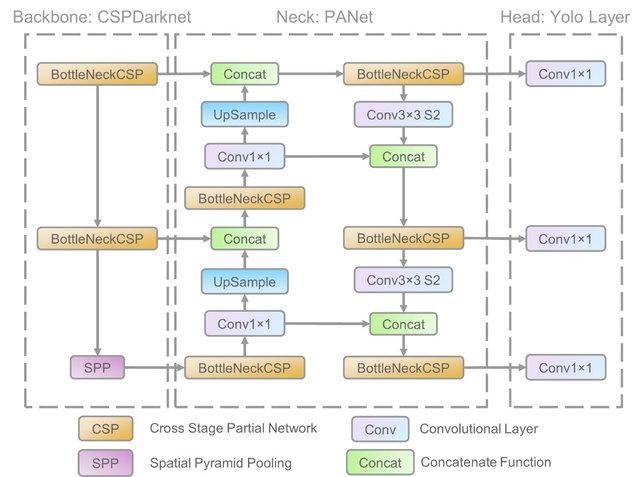
YOLO V5 model architecture | researchgate
NLP Engineering Interview Questions
What is Syntactic Analysis?
Syntactic Analysis, also known as Syntax analysis or Parsing, is a text analysis that tells us the logical meaning behind the sentence or part of the sentence. It focuses on the relationship between words and the grammatical structure of sentences. You can also say that it is the processing of analyzing the natural language by using grammatical rules.
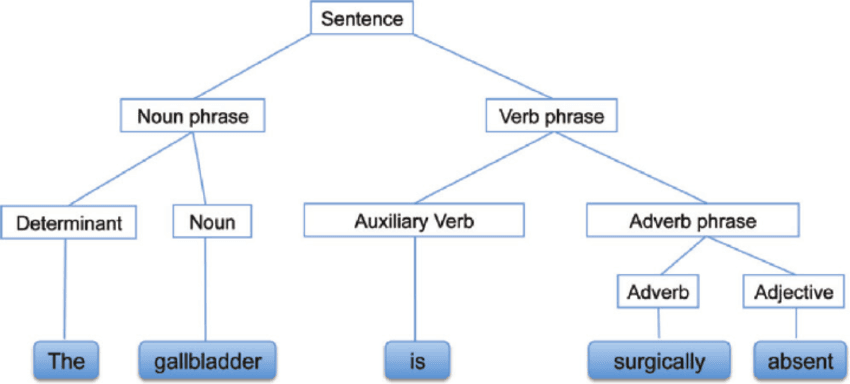
Syntactic Analysis | researchgate
What are Stemming and Lemmatization?
Stemming and lemmatization is a normalizing technique used to minimize the structural variation of words in a sentence.
Stemming removes the affixes added to the word and leaves it in base form. For example, Changing to Chang.
It is widely used by search engines for storage optimization. Instead of storing all the forms of the words, it only stores the stems.
Lemmatization converts the word into its lemma form. The output is the root word instead of the stem word. After lemmatization, we get the valid word that means something. For example, Changing to Change.
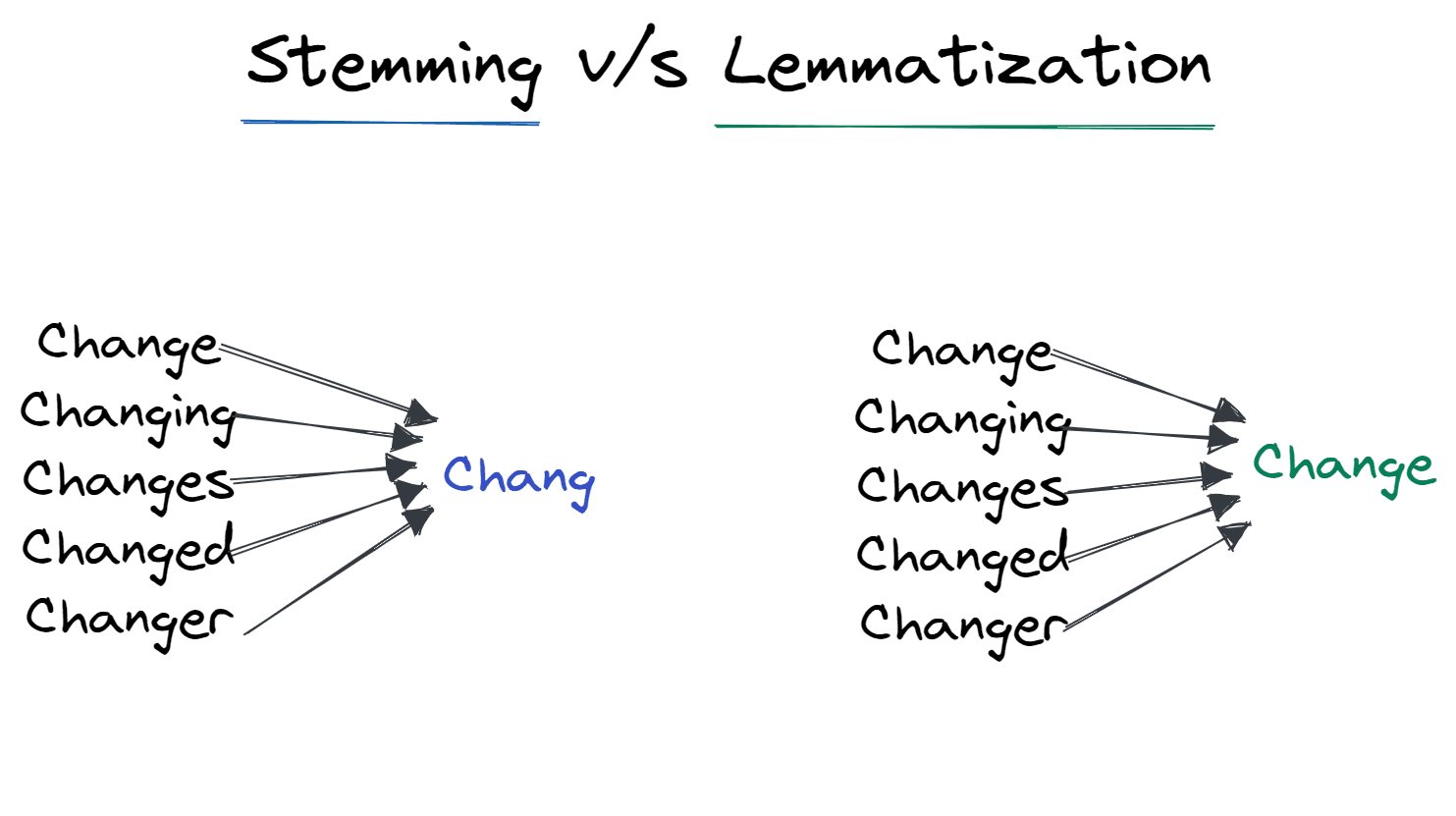
Stemming vs. Lemmatization | Author
How would you reduce the inference time of a trained transformer model?
It is the responsibility of machine learning engineers to optimize the model inference. Due to large language models, it has become more difficult to deploy models in production and reduce inference time to microseconds.
To improve inference time, we can use:
- GPU, TPU, or FPGA for acceleration.
- GPU with fp16 support
- Pruning to reduce parameters
- Knowledge distillation
- Hierarchical softmax or adaptive softmax
- Cache predictions
- Parallel/batch computing
- Reduce the model size
Learn the basics of NLP by completing Natural Language Processing in Python skill track.
Reinforcement Learning Engineering Interview Questions
What are the steps involved in a typical Reinforcement Learning algorithm?
Reinforcement learning uses trial and error to reach goals. It is a goal-oriented algorithm and it learns from the environment by taking correct steps to maximize the cumulative reward.
In typical reinforcement learning:
- At the start, the agent receives state zero from the environment
- Based on the state, the agent will take an action
- The state has changed, and the agent is at a new place in the environment.
- The agent receives the reward if it has made the correct move.
- The process will repeat until the agent has learned the best possible path to reach the goal by maximizing the cumulative rewards.
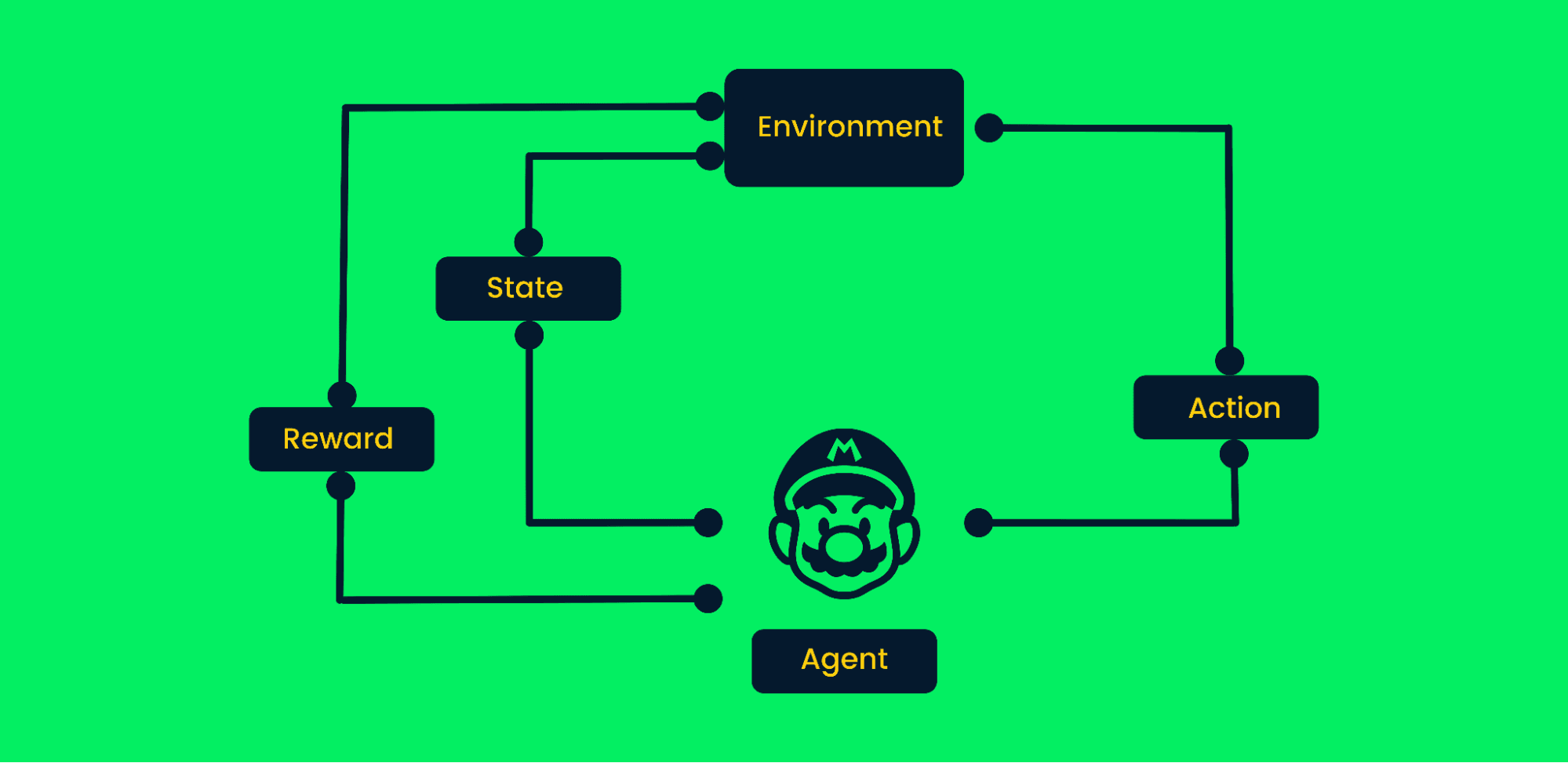
Reinforcement Learning Framework | Author
What is the difference between Off-Policy and On-Policy Learning?
On-Policy learning algorithms evaluate and improve the same policy to act and update it. In other words, the policy that is used for updating and the policy that is used to take action are the same.
Target Policy == Behavior Policy
On-policy algorithms are Sarsa, Monte Carlo for On-Policy, Value Iteration, and Policy Iteration
Off-Policy Learning algorithms are completely different as the updated policy is different from the behavior policy. For example, in Q-learning, the agent learns from an optimal policy with the help of a greedy policy and takes action using other policies.
Target Policy != Behavior Policy
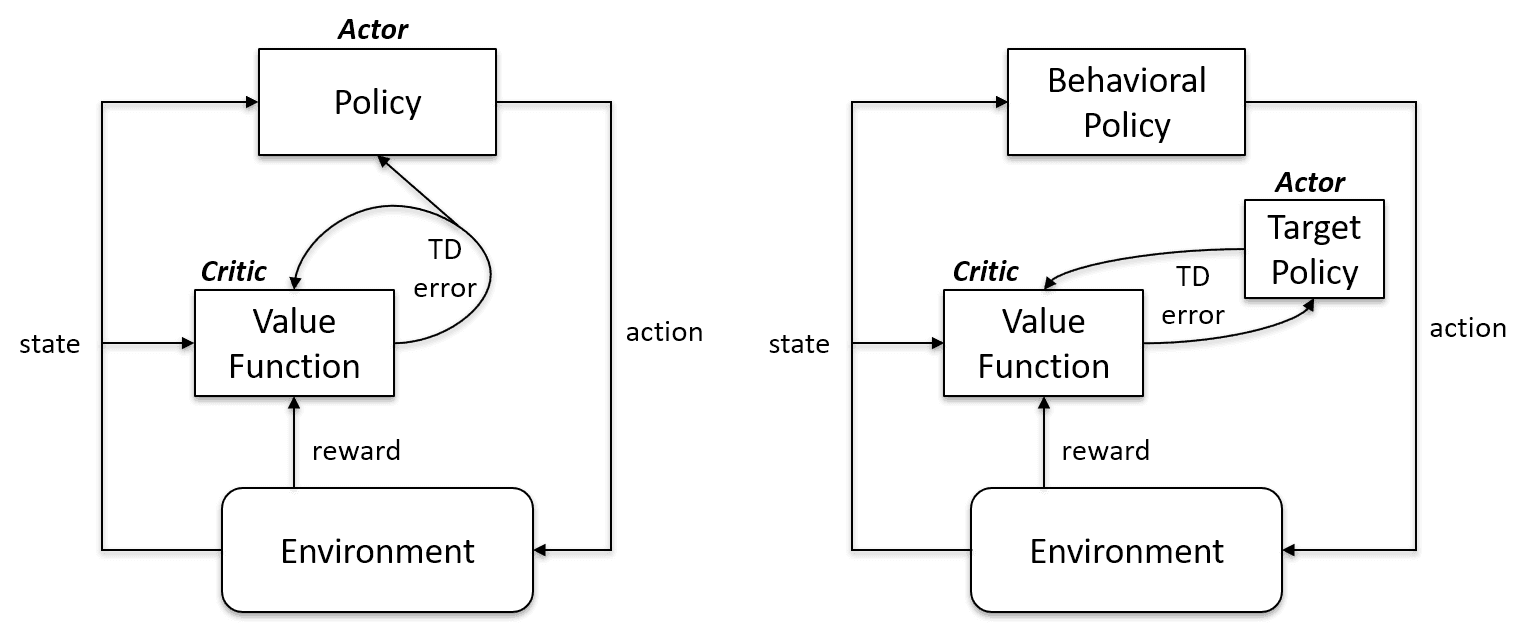
On-policy vs. Off-policy case | Artificial Intelligence Stack Exchange
Why do we need “Deep” Q learning?
Simple Q learning is great. It solves the problem on a smaller scale, but on a larger scale, it fails.
Imagine if the environment has 1000 states and 1000 actions per state. We will require a Q table of millions of cells. The game of chess and Go will require an even bigger table. This is where Deep Q-learning comes for the rescue.
It utilizes a neural network to approximate the Q value function. The neural networks recipe states as an input and outputs the Q-value of all possible actions.
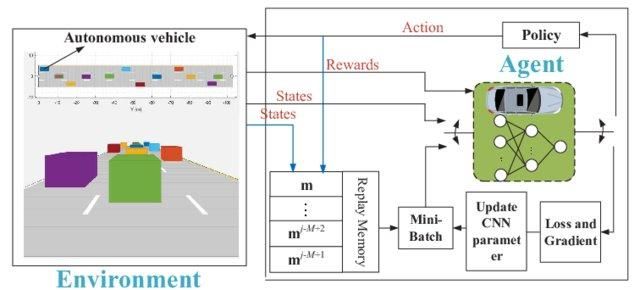
Deep Q-network for autonomous driving | researchgate
FAANG Machine Learning Engineer Questions
Below, we’ve outlined some potential questions the interviewer might ask you at some of the top tech companies:
Amazon Machine Learning Interview Questions
What is the interpretation of a ROC area under the curve?
Receiver operating characteristics (ROC) shows the trade-off between sensitivity and specificity.
- Sensitivity: it is the probability that the model predicts a positive outcome when the actual value is also positive.
- Specificity: it is the probability that the model predicts a negative outcome when the actual value is also negative.
The curve is plotted using the False positive rate (FP/(TN + FP)) and true positive rate (TP/(TP + FN))
The area under the curve (AUC) shows the model performance. If the area under the ROC curve is 0.5, then our model is completely random. The model with AUC close to 1 is the better model.
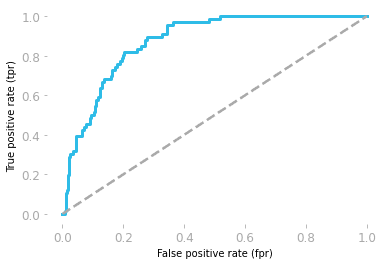
ROC curve by Hadrien Jean
What are the methods of reducing dimensionality?
For dimensionality reduction, we can use feature selection or feature extraction methods.
Feature selection is a process of selecting optimal features and dropping irrelevant features. We use Filter, Wrapper, and Embedded methods to analyze feature importance and remove less important features to improve model performance.
Feature extraction transforms the space with multiple dimensions into fewer dimensions. No information is lost during the process, and it uses fewer resources to process the data. The most common extraction techniques are Linear discriminant analysis (LDA), Kernel PCA, and Quadratic discriminant analysis.
How do you find thresholds for a classifier?
In the case of a spam classifier, a logistics regression model will return the probability. We either use the probability of 0.8999 or convert it into class (Spam/Not Spam) using a threshold.
Usually, the threshold of a classifier is 0.5, but in some cases, we need to fine-tune it to improve the accuracy. The 0.5 threshold means that if the probability is equal to or above 0.5, it is spam, and if it is lower, then it is not spam.
To find the threshold, we can use Precision-Recall curves and ROC curves, grid search, and by manually changing the value to get a better CV.
Become a professional machine learning engineer by completing Machine Learning Scientist with Python career track.
Google Machine Learning Interview Questions
What are the assumptions of linear regression?
Linear regression is used to understand the relation between features (X) and target (y). Before we train the model, we need to meet a few assumptions:
- The residuals are independent
- There is a linear relation between X independent variable and y dependent variable.
- Constant residual variance at every level of X
- The residuals are normally distributed.
Note: the residuals in linear regression are the difference between actual and predicted values.
Write a function find_bigrams to take a string and return a list of all bigrams.
During coding interviews, you will be asked about machine learning problems, but in some cases, they will assess your Python skills by asking you general coding questions. Become an expert Python programmer by taking the Python Programmer career track.
Creating a bigram function is quite easy. You need to use two loops with the zip function.
- In bigram function, we are taking a list of the sentence as an input
- Creating a loop to access a single sentence
- Lowering and splitting the sentence into a list of words
- Using `zip` to create a combination of the previous word and the next word
- Appending the output to the result
- Printing the results.
It is quite easy if you break down the problem and use zip functions.
def bigram(text_list:list):
result = []
for ls in text_list:
words = ls.lower().split()
for bi in zip(words, words[1:]):
result.append(bi)
return result
text = ["Data drives everything", "Get the skills you need for the future of work"]
print(bigram(text))Results:
[('Data', 'drives'), ('drives', 'everything'), ('Get', 'the'), ('the', 'skills'), ('skills', 'you'), ('you', 'need'), ('need', 'for'), ('for', 'the'), ('the', 'future'), ('future', 'of'), ('of', 'work')]What is the activation function in Machine Learning?
The activation function is a non-linear transformation in neural networks. We pass the input through the activation function before passing it to the next layer.
The net input value can be anything between -inf to +inf, and the neuron doesn’t know how to bound the values, thus unable to decide the firing pattern. The activation function decides whether a neuron should be activated or not to bound the net input values.
Most common types of Activation Functions:
- Step Function
- Sigmoid Function
- ReLU
- Leaky ReLU
Meta Machine Learning Interview Questions
How would you build a restaurant recommendation on Facebook?
The answer is completely up to you. But before answering, you need to consider what business goal you want to achieve to set a performance metric and how you are going to acquire the data.
In a typical machine learning system design, we:
- Collect, clean, and analyze the data.
- Perform feature engineering
- Select a methodology, algorithm, or machine learning model
- Train and evaluate the performance on test and validation datasets.
- Streamline the processes and deploy the model in production.
You need to make sure you are focusing on design rather than theory or model architecture. Make sure to talk about model inference and how improving it will increase the overall revenues.
Also, give an overview of why you selected a certain methodology over the other.
Learn more about building recommendation systems by taking a course on DataCamp.
Given two strings A and B, write a function can_shift to return whether or not, A can be shifted some number of places to get B.
Solving coding challenges and working on your Python skills will improve your chance of getting past the coding interview stage.
Before jumping into solving a problem, you need to understand the question. You simply need to create a boolean function that will return True if by shifting the alphabets in String B, you get String A.
A = 'abid'
B = 'bida'
can_shift(A, B) == True- Return false if the length of the string is not similar.
- Loop around the range of length of String A
- Create mut_a to create various combinations of characters using the String A
- During the loop, if mut_a is equal to String B returns True, else returns false.
def can_shift(a, b):
if len(a) != len(b):
return False
for i in range(len(a)):
mut_a = a[i:] + a[:i]
if mut_a == b:
return True
return False
A = 'abid'
B = 'bida'
print(can_shift(A, B))
>>> TrueWhat is Ensemble learning?
Ensemble learning is used to combine the insights of multiple machine learning models to improve the accuracy and performance metrics.
Simple ensemble methods:
- Mean/average: we average the predictions from multiple high-performing models.
- Weighted average: we assign different weights to machine learning models based on the performance and then combine them.
Advance ensemble methods:
- Bagging is used to minimize variance errors. It randomly creates the subset of training data and trains it on the models. The combination of models reduces the variance and makes it more reliable compared to a single model.
- Boosting is used to reduce bias errors and produce superior predictive models. It is an iterative ensemble technique that adjusts the weights based on the last classification. Boosting algorithms give more weight to observations that the previous model predicted inaccurately.
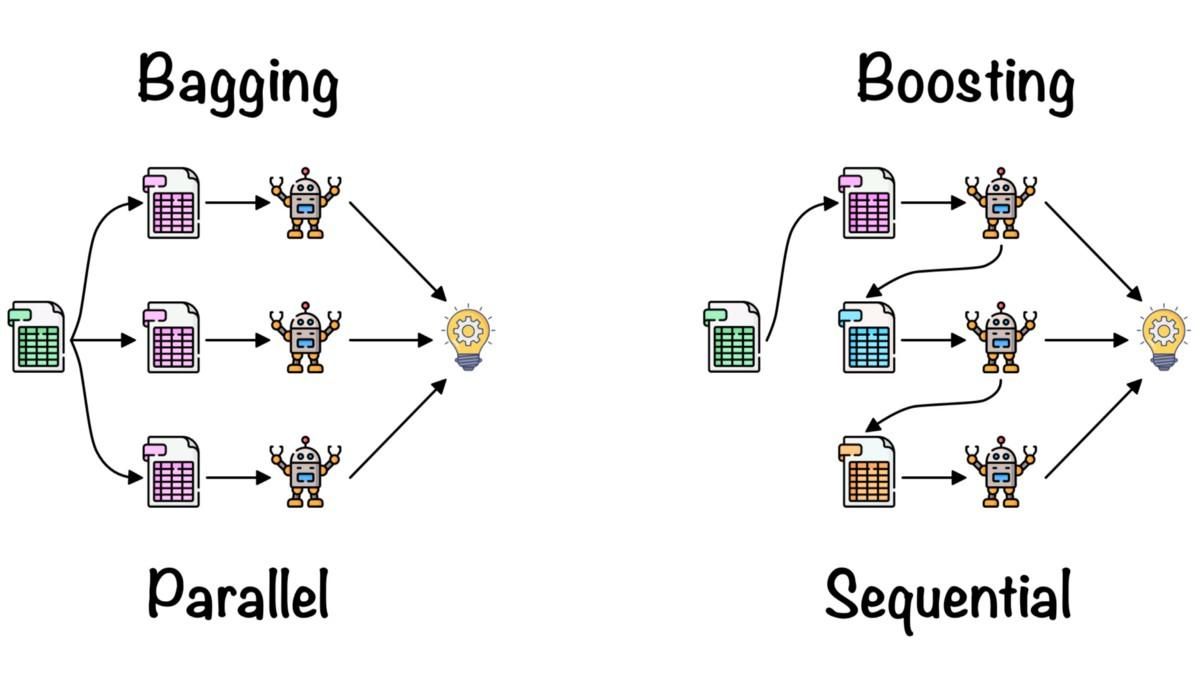
Bagging and Boosting by Fernando López
Learn more about averaging, bagging, stacking, and boosting by completing the Ensemble Methods in Python course.
How to Prepare for the Machine Learning Interview
Understand the role and company
It is important to know about the company you are applying to and the role. Make sure you review the job description and prepare accordingly. Most of the job applications will include tools, technologies, methodologies, and skills. Use this information and talk about them during the technical and non-technical interview stages.
Solve coding challenges
Practicing Python, solving coding challenges, and making sure you are timing your practice. The interviewer won’t let you use all the time to come up with a solution. You can also use platforms like Leetcode, Code wars, and DataCamp to practice coding challenges.
Review recent machine learning projects
Most hiring managers prepare questions from your previous project using GitHub repositories, resume, and portfolio. They will ask you to explain how you can overcome certain issues in a specific project. Don’t get overwhelmed; just review your portfolio projects. Don’t forget, you can use DataCamp Workspace to showcase your projects.
Data handling and processing
You need to learn how to handle structured and unstructured tabular data, sound files, and image data. Learn various ways to augment, clean, and process the data. Learn to adjust the size of data based on the deep neural network architecture.
Review mock interview questions
Reviewing mock machine learning interview questions is the best way to prepare for an interview. You need to review behavioral and situational, basic machine learning, coding, role-specific, and machine learning operations questions.
Read about the latest development in AI/ML
During the interview, you will be asked about the latest tools, technologies, models, and methodologies. Companies are looking for individuals who are in tune with the industry and who are eager to learn. You need to read blogs, research papers, and follow social media groups to understand the trend and get informed.
Machine learning is an ever-changing landscape. Every week you will see new state-of-the-art technology. Currently, it is a stable-diffusion text-to-image diffusion model.
Design end-to-end machine learning life cycle
In the latter part of the interview, you will be asked about system design. Explain how you will gather the data, process it, and build a machine learning solution. For example: How would you build a restaurant recommendation on Facebook?
It is always good to prepare yourself to answer these questions by reading about various machine learning systems on the internet. You don’t have to go deep; just learn about the steps or how to handle complex data.
